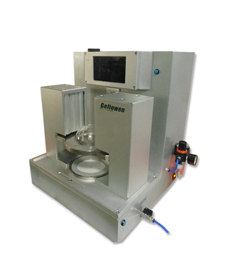Hydrostatic Head Testing: Ensuring Water Resistance for Outdoor Fabrics
When it comes to outdoor activities, having the proper gear is essential. Whether you're hiking in the rainforest or skiing on a snowy mountain, you need clothing and equipment that can withstand the elements. That's where hydrostatic head testing equipment comes in.
What is Hydrostatic Head Testing?
Hydrostatic head testing is a method used to determine the water resistance of fabrics. It measures the ability of a fabric to resist water penetration under pressure. The test involves placing a piece of fabric under a column of water and increasing the pressure until water begins to seep through. The height of the water column at which this occurs is known as the hydrostatic head.

Why is Hydrostatic Head Testing Important?
The ability of outdoor fabrics to resist water is critical for ensuring comfort and safety during outdoor activities. Wet clothing can lead to hypothermia, and wet equipment can become heavy and difficult to use. Hydrostatic head testing helps manufacturers ensure that their products meet specific standards for water resistance.
For example, if you're buying a tent for camping, you want it to be able to withstand heavy rain without leaking. The hydrostatic head rating will give you an idea of how much rain the tent can handle before it starts letting in water.
How is Hydrostatic Head Testing Used in Product Development?
Hydrostatic head testing is an important part of product development for outdoor fabrics. Manufacturers use this test to determine how much pressure their fabrics can withstand before they begin to leak.
Once they have this information, they can make adjustments to their products' design or materials to improve their performance. For example, they may add an additional layer of waterproofing or select different materials that offer better water resistance.
Different types of outdoor gear require different levels of water resistance. For example, a rain jacket needs a higher hydrostatic head rating than a backpack because it will be exposed to more water. Manufacturers can use hydrostatic head testing to ensure that each product meets the necessary standards for its intended use.
What are the Standards for Hydrostatic Head Testing?
Different countries and organizations have their own standards for hydrostatic head testing. In the United States, the American Society for Testing and Materials (ASTM) has developed a set of guidelines called ASTM D3393-16. These guidelines specify the procedures for conducting hydrostatic head testing on various types of fabrics.
The European Union has its own set of standards, known as EN 20811:1992. These standards are similar to ASTM D3393-16 but have some minor differences in terms of test methods and calculations.
In general, higher hydrostatic head ratings indicate better water resistance. For example, a fabric with a rating of 10,000mm can withstand more pressure than a fabric with a rating of 5,000mm.
Conclusion
Hydrostatic head testing is an essential tool for ensuring that outdoor fabrics meet specific standards for water resistance. This test helps manufacturers develop products that can withstand different levels of water pressure, whether it's from rain or snow.
As consumers, we can use hydrostatic head ratings to make informed decisions about which products will best suit our needs. Whether you're looking for a rain jacket or a tent, understanding this rating system will help you choose gear that will keep you dry and comfortable during your outdoor adventures.

